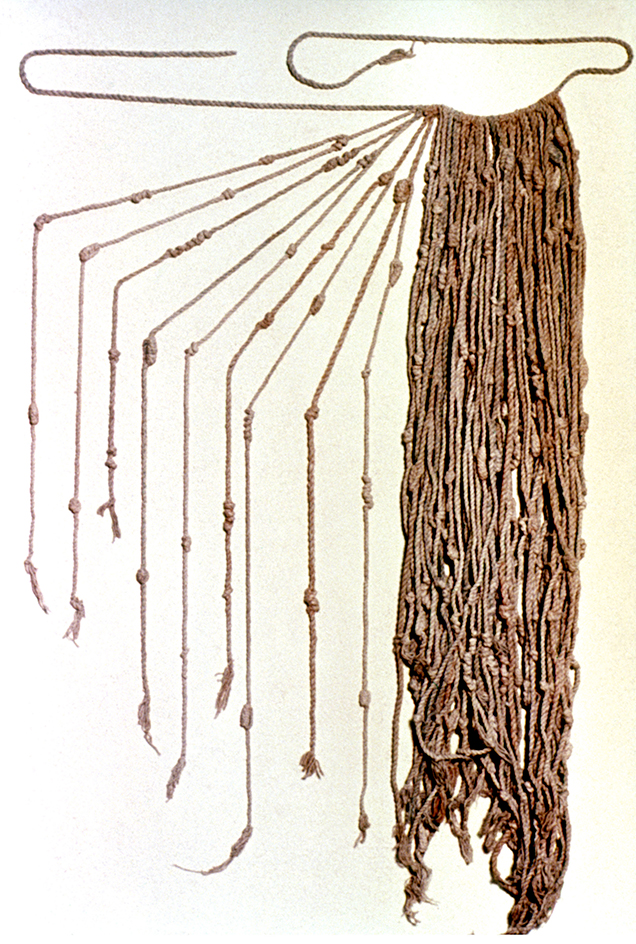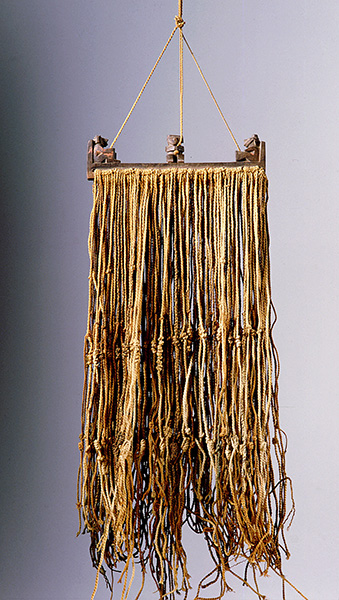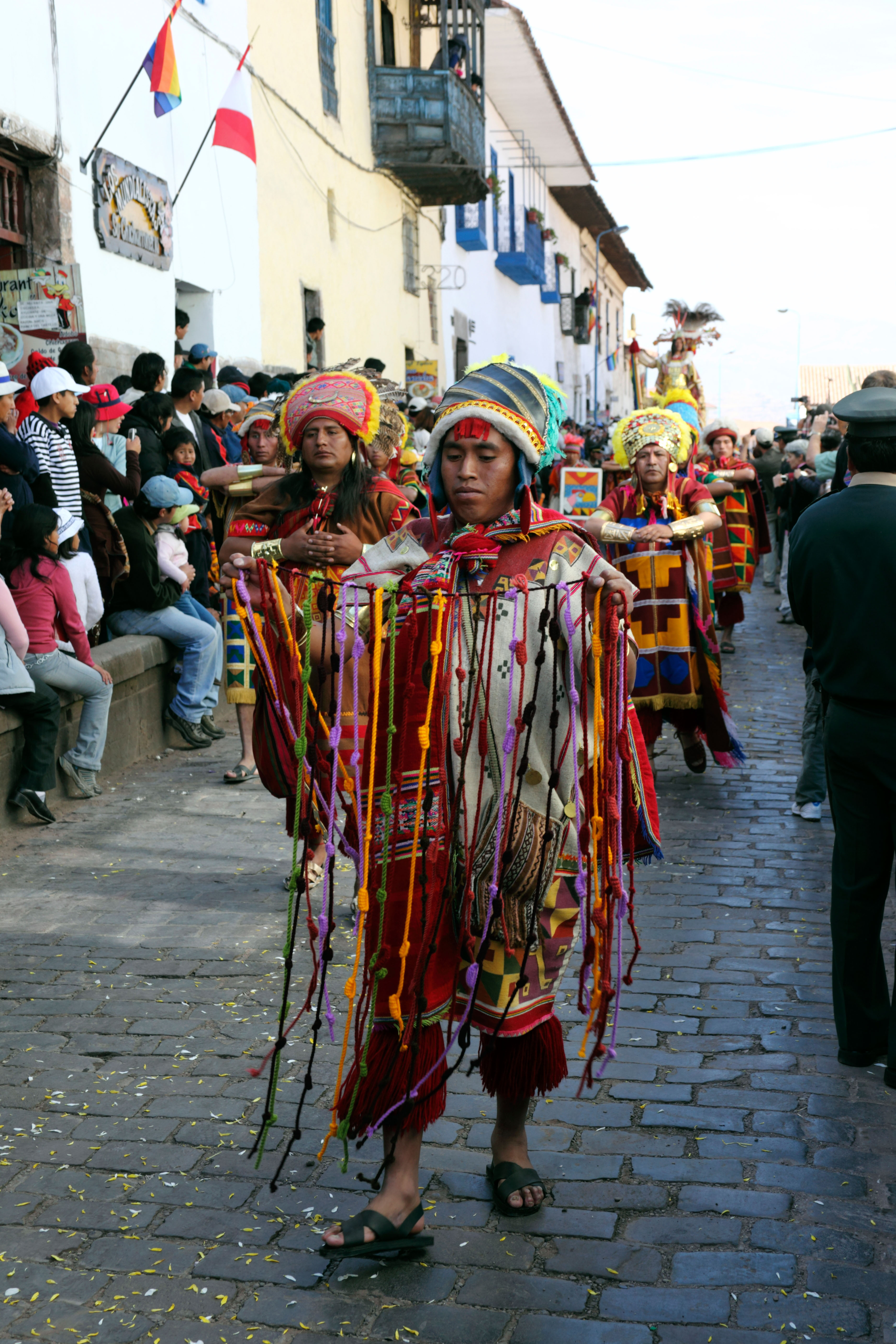Quipu, << KEE poo, >> also spelled khipu, is a record-keeping device made of knotted strings used by the Inca and other Andean cultures of South America. Quipu means knot in Quechua, the language of the Inca and other people of the Andes Mountains. Quipus are made of knotted wool or cotton cords of a single color or multiple colors. A quipu consists of a single main cord to which pendant cords are attached. A pendant cord may also have cords attached to it, called subsidiary cords. These cords, in turn, can have their own subsidiary cords, and so on. The colors and knots of the pendant and subsidiary cords probably encode most of the quipu’s information.

Scholars believe that the most widespread use of the quipu occurred in the A.D. 1400’s and early 1500’s, during the height of the Inca empire. The Inca did not have an alphabetic writing system with which to keep records. According to the descriptions of Spanish conquerors, the Inca used quipus to record the goods and services they received as tribute (forced payment) from the peoples they ruled. Communities throughout the region also used quipu records in the administration of local affairs.
Numerical quipus.
The American historian Leslie Leland Locke first decoded the knot system used in some quipu in the early 1900’s. These quipus, called numerical quipus, record numbers using a decimal place-value system. In a decimal place-value system, symbols—in this case, knots—indicate the values 0 through 9, and their placement indicates whether they stand for ones, tens, hundreds, or some other power of ten. Numerical quipus use three types of knots: (1) figure eight knots, (2) long knots, and (3) simple overhand knots. The position of the knots on the cords shows whether they stand for ones, tens, hundreds, or even higher powers of ten.

A figure eight knot represents the number 1. Long knots designate the numbers 2 through 9. A long knot includes a number of wrappings or turns equal to the value it represents. For example, a long knot with five turns indicates the number 5. Typically, figure eight knots and long knots appear only at the loose end of a cord. In this position, they represent the number of ones. Moving up the strand, a space separates the ones position from the tens position, the tens position from the hundreds position, and so on. Generally, only simple overhand knots appear in the tens position and above. Each of these knots corresponds to one unit of that power of ten. For example, a group of four overhand knots in the tens position would indicate the number 40, which is four tens. Any position empty of knots indicates a zero quantity of that power of ten.
To understand how numerical quipus work, imagine a quipu strand recording the number 2,463. Starting at the end farthest from the main cord, the strand would appear as follows: a long knot with three turns (representing the number 3); a space followed by a grouping of six overhand knots (meaning six tens or 60); another space followed by four overhand knots (4 X 100 or 400); and finally a space followed by two overhand knots (2 X 1,000 or 2,000).
Studying quipus.
Many scholars believe that quipus record information only in the colors of the cord and the pattern of knots. Some researchers, however, have also suggested that other features of the quipu may carry meaning. These include the manner in which the individual cords are woven and the direction in which the knots are tied.

Some quipus do not always follow the numerical code described by Locke. A few scholars argue that these are extranumerical quipus that use knots to record information other than numbers, such as historical accounts. However, scholars have not managed to fully decode any extranumerical quipu.
As recently as the 1970’s, shepherds of the Andes Mountains were still using the quipu to keep track of their flocks. Some communities also preserve older quipus as part of their heritage. These quipus may provide clues about the traditions of local people prior to the Spanish conquest of the region in the early 1500’s.
See also Inca (Communication and learning) .
